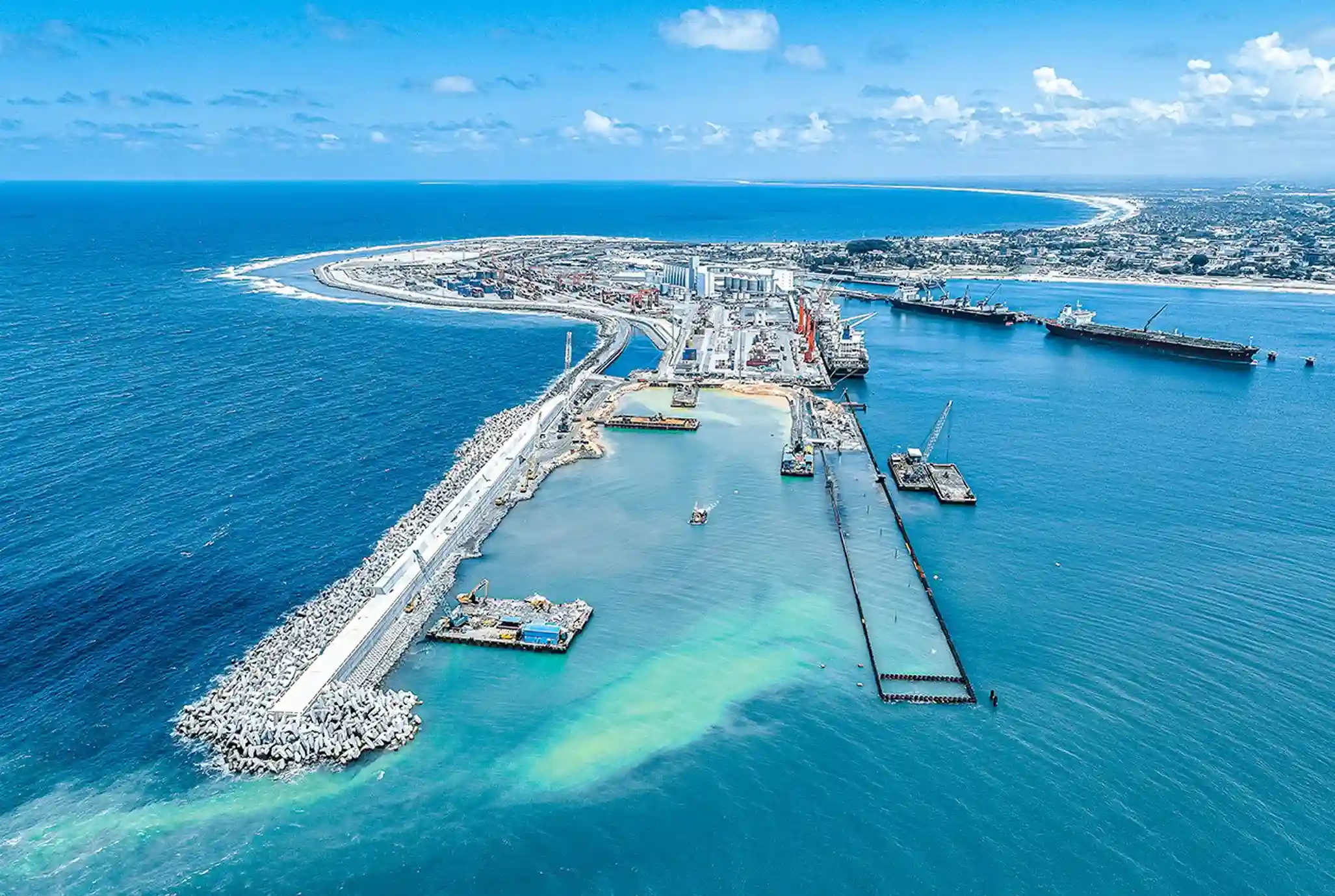Port engineering in Madagascar: strengthening the resilience and performance of maritime infrastructures

Madagascar, a strategic island in the Indian Ocean, has a port network essential to its economy: Toamasina, Mahajanga, Tulear, Fort-Dauphin, Nosy Be... These infrastructures are the heart of the country's maritime trade, ensuring more than 90% of international trade.
But facing climate, logistical and environmental challenges, Malagasy port engineering must reinvent itself: modernise structures, strengthen their sustainability and anticipate coastal risks.
With CREOSEA, we put our expertise in marine, offshore and port engineering in the service of the sustainable development of ports of Madagascar. Our approach combines technical analysis, feedback from field experience and mastery of international standards, to support public and private project owners in securing and optimizing maritime infrastructures.
Context and challenges of the Malagasy port system
Madagascar's ports play a vital role in the island economy.
However, they are confronted with several structural and climate issues :
- Aging of existing structures, often built before modern standards.
- Fast sedimentation and recurrent silting of access channels.
- Direct exposure to climatic hazards : cyclones, strong swells, sea level rise.
- Logistical constraints due to the remoteness of industrial areas and the weakness of land infrastructures.
- Environmental pressure on sensitive areas (mangroves, reefs, lagoons).
In this context, the main challenge is to design resilient port structures, capable of withstanding extreme conditions while improving operational performance and the safety of maritime operations.
Methodology, solutions and best practices
The approach of CREOSEA relies on a integrated methodology combining engineering, environment and digital innovation.
Each project is designed according to specific conditions of the Malagasy coastline, with a focus on sustainability, maintenance and cost control.
Key steps in our approach:
- Preliminary studies and diagnoses
- Bathymetry, geotechnics, waves, currents, topography and underwater surveys.
- Inspection of existing structures (docks, jetties, docks, spikes).
- Modeling and technical design
- Hydrodynamic and sedimentary calculations.
- 2D/3D numerical modeling of structures (dikes, breakwaters, docks).
- Studies of soil-structure interaction and stability under cyclonic loads.
- Definition of appropriate constructive solutions
- Raising the docks to anticipate the rise in sea level.
- Reinforcement of foundations and embankments with local materials.
- Solutions nature-based : reconstitution of sandy beaches, rehabilitation of mangroves, artificial reefs.
- Operational support and follow-up
- Project management assistance (AMO).
- Monitoring of port and offshore works.
- Quality control, in-situ tests, technical reporting.
Good practices in Madagascar:
- Integrate the climate resilience in basic studies.
- Valuing the local resources for construction (aggregates, labour, materials).
- Ensuring a multi-actor coordination : port authorities, environment, communities.
- Plan a preventive maintenance in the long term, adapted to tropical constraints.
Safety, regulations and quality
The upgrading of Malagasy ports involves strict compliance with international standards and the implementation of a rigorous quality system.
Norms and standards applied:
- PIANC, BS6349, Eurocode 7 and 8, ISO 21650 for marine design.
- HSE rules (Health, Safety, Environment) adapted to tropical conditions.
- Material compliance checks and quality documentary monitoring (plans, QHSE, test reports).
At CREOSEA, each project is conducted in a logic of security and transparency :
- HSE supervision in port and offshore environments.
- Independent verification (ITR) on critical phases.
- Training and supervision of local staff.
Our approach guarantees safe, compliant and environmentally friendly structures.
Feedback, tools and field supervision
One of the advantages of CREOSEA is its operational anchoring in Africa and the Indian Ocean, with a direct knowledge of the Malagasy terrain.
Tools and methods deployed:
- Underwater inspection by qualified divers and ROVs.
- Non-Destructive Testing (NDT) : ultrasound, magnetoscopy, penetrant, endoscopy.
- GNSS/RTK topographic and bathymetric surveys.
- 3D modeling and photogrammetric monitoring structures.
Examples of typical missions:
- Assessment of the stability of docks and docks in the port of Toamasina.
- Studies of silting and dredging on the west coast (Mahajanga, Morondava).
- Technical assistance to the rehabilitation of cyclone structures in Fort-Dauphin.
- Training of local teams at preventive maintenance and port inspections.
These interventions demonstrate the importance of onsite presence and rigorous monitoring, essential to the sustainability of maritime infrastructures in exposed environments.
Conclusion: engineering rooted in reality, looking to the future
The future of Malagasy ports depends on engineering intelligent, sustainable and connected to local realities.
With its knowledge of tropical environments and maritime operations, CREOSEA supports project owners, operators and port authorities in modernising and securing coastal infrastructures.
Our strength: one field expertise, an approach integrated And a sustainable vision maritime development.
CREOSEA, technical partner to build the resilience of Madagascar's ports.


